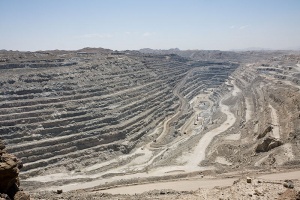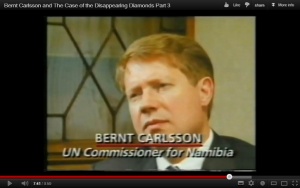Difference between revisions of "United Nations Council for Namibia"
(Blanked the page) |
(Transfer from UN Commissioner for Namibia) |
||
| (2 intermediate revisions by 2 users not shown) | |||
| Line 1: | Line 1: | ||
| + | {{group | ||
| + | |image=UN_Council_for_Namibia.jpg | ||
| + | |image_width=240px | ||
| + | |start=1967 | ||
| + | |end=1990 | ||
| + | |abbreviation=UNCN | ||
| + | }} | ||
| + | The '''United Nations Council for Namibia (UNCN)''' was established in 1967 (for the first year, known as the '''United Nations Council for South West Africa''') as the legal Administering Authority for the UN Trust Territory, [[Namibia]], which continued to be occupied by apartheid [[South Africa]] after the UN terminated its mandate in 1966.<ref>''[http://africanactivist.msu.edu/image.php?objectid=32-131-1F "Independence for Namibia Now! UN Council for Namibia"]''</ref> | ||
| + | ==Illegal occupation== | ||
| + | In 1971 the [[International Court of Justice]] ruled that the continued presence of South Africa in Namibia was illegal and as a result South Africa was under the obligation to withdraw its administration from Namibia immediately and thus put an end to its occupation of the Territory. But South Africa refused to withdraw, and the national liberation movement [[South West Africa People's Organisation]] (SWAPO) proceeded with its struggle for independence.<ref>''[http://www.unhcr.org/uk/excom/ecodec/3ae69eefe/membership-namibia-represented-united-nations-council-namibia-executive.html "Membership of UNHCR represented by the United Nations Council for Namibia"]''</ref> | ||
| + | |||
| + | ==Governors-in-waiting== | ||
| + | Although the UN Council for Namibia was prevented from establishing ''de facto'' control of the country, the UNCN did appoint a series of seven [[United Nations Commissioner for Namibia|UN Commissioner]]s to act as governors-in-waiting. The 7th [[UN Commissioner for Namibia]], [[Bernt Carlsson]], was scheduled to take control of Namibia upon the signing of the [[New York Accords]] by South African Foreign Minister [[Pik Botha]] on 22 December 1988. However, Carlsson was killed in the [[Pan Am Flight 103|Lockerbie bombing]] of 21 December 1988 and Botha passed control to the South African appointee Administrator-General [[Louis Pienaar]] instead.<ref>''[http://www.nytimes.com/1988/12/22/world/un-officer-on-flight-103.html "U.N. Officer on Flight 103"]''</ref> | ||
| + | |||
| + | ==UNCN Decree== | ||
| + | [[File:UNIN_X.jpg|300px|right|thumb|Marking the [[UNIN]]'s 10th anniversary]] | ||
| + | The UN Council for Namibia enacted in 1974 a Decree for the Protection of the Natural Resources of Namibia, under which no person or entity could search for, take or distribute any natural resources found in Namibia without the Council's permission. Any person or entity contravening the Decree could be held liable for damages by the future government of an independent Namibia. Also in 1974, the Council established the [[UN Institute for Namibia]], located in Lusaka, Zambia. The Institute, which operated until after independence, provided Namibians with education and training equipping them to administer a free Namibia. In 1976 the [[UN Security Council]] for the first time demanded that South Africa accept elections for the Territory under United Nations supervision and control. In the same year, the [[UN General Assembly]] condemned South Africa for organising so-called constitutional talks at Windhoek, Namibia's capital, designed to perpetuate the colonial oppression and exploitation of Namibia. It decided that any independence talks must be between South Africa and the [[South West Africa People's Organisation]] (SWAPO), which UNGA recognised as the sole and authentic representative of the Namibian people. UNGA also launched a comprehensive assistance programme in support of Namibia's nationhood, involving assistance by United Nations organisations and specialised agencies. | ||
| + | |||
| + | In 1977, UNGA declared that South Africa's decision to annex Walvis Bay — Namibia's main port and vital economic avenue — was illegal, null and void and an act of colonial expansion. At a special session on Namibia in 1978, UNGA expressed support for the armed liberation struggle of Namibian people, and stated that any settlement must be arrived at with the agreement of [[SWAPO]] and within the framework of United Nations resolutions.<ref>[http://www.un.org/en/peacekeeping/missions/past/untagS.htm "Historical background - Namibia"]</ref> | ||
| + | |||
| + | ===Namibian Yellowcake=== | ||
| + | [[File:Rossing_Uranium_Mine.jpg|300px|thumb|right|[http://www.itnsource.com/en/shotlist/ITVProgs/1980/03/10/105680514/?s=Follow%20The%20Yellowcake%20Road "Follow the Yellowcake Road"] and the [[Rössing Uranium Mine]] ]] | ||
| + | [[File:Disappearing_Diamonds.jpg|300px|right|thumb|How [[De Beers]] were illegally exploiting Namibia's natural resources]] | ||
| + | [[File:Bernt_Carlsson_2.jpg|300px|thumb|right|UN Commissioner [[Bernt Carlsson]] is interviewed in [http://www.youtube.com/watch?v=IHIDaGrIsmY Part 3 of the film (7:32 to 9:10)] ]] | ||
| + | On 10 March 1980, the TV documentary [http://www.itnsource.com/en/shotlist/ITVProgs/1980/03/10/105680514/?s=Follow%20The%20Yellowcake%20Road "Follow the Yellowcake Road"] was broadcast in the UK by ''Thames Television''.<ref>[http://ftvdb.bfi.org.uk/sift/title/107762 "Follow The Yellowcake Road"]</ref> Synopsis of the film: | ||
| + | :"''World In Action'' investigates the secret contract and operation arranged by British-based [[Rio Tinto Group|Rio Tinto Zinc Corp]] to import into Britain uranium ([[Yellowcake]]) from the [[Rössing Uranium Mine]] in Namibia, whose major shareholders are the governments of Iran and South Africa. This contract having received the blessing of the British government is now compromising the UK's position in the [[United Nations]] negotiations to remove apartheid South Africa from Namibia, which it is illegally occupying."<ref>[http://www.itnsource.com/en/shotlist/ITVProgs/1980/03/10/105680514/?s=Follow%20The%20Yellowcake%20Road ''World In Action'' "Follow The Yellowcake Road"]</ref> | ||
| + | |||
| + | In May 1985, the UN Council for Namibia decided to take legal action against the Dutch arm of the Anglo/Dutch/German consortium [[URENCO]] for breaching the UNCN Decree by importing uranium ore from the [[Rössing Uranium Mine]] in Namibia. The case was expected to be ready by the end of 1985 but was delayed because [[URENCO]] argued that, despite having enriched uranium of Namibian origin since 1980, it was impossible to tell where specific consignments came from. When the case finally reached court in July 1986, the Dutch government took [[URENCO]]'s line, claiming not to have known where the uranium had been mined.<ref>[http://findarticles.com/p/articles/mi_m1309/is_n4_v24/ai_6272039/ "Council for Namibia sues Netherlands over Namibia's natural resources"]</ref> | ||
| + | |||
| + | Upon the adjournment of the [[URENCO]] proceedings, [[SWAPO]]'s UN representative, [[Helmut Angula]], insisted that other companies, such as Shell, [[De Beers]] (Consolidated Diamond Mines), Newmont, and [[Rio Tinto Group]] were also likely to face prosecution for breaching the UNCN Decree.<ref>''[https://www.facebook.com/patrick.haseldine/posts/10204251932792712 "''Namibian Sun'' spotlights Lockerbie"]''</ref> | ||
| + | |||
| + | ===Gem Diamonds=== | ||
| + | In a 28 September 1987 ''World In Action'' TV documentary ("[[The Case of the Disappearing Diamonds]]"), UNCN [[Bernt Carlsson]] warned that he intended to start proceedings against the countries and firms which had been defying UN law over many years by stealing billions of pounds' worth of Namibia's natural resources. Among those facing UN compensation claims were: the diamond mining firm [[De Beers]]; [[P W Botha]]'s apartheid regime of South Africa; [[Rio Tinto Group]], owners of the [[Rössing Uranium Mine]]; and, the government of Iran which today still owns 15% of [[Rössing Uranium Mine|Rössing]] and, in 1988-89, received large shipments of [[Yellowcake|uranium]] from Namibia. When asked if he would be taking action against other companies such as [[De Beers]], the diamond mining conglomerate, [[Bernt Carlsson]] told interviewer [[John Coates]]: | ||
| + | :"All the companies which are carrying out activities in Namibia which have not been authorised by the United Nations are being studied at present. As far as [[De Beers]] is concerned, the corporation has been trying to skim the cream which means they have gone for the large diamonds at the expense of the steady pace. In this way they have really shortened the lifespan of the mines. One would expect from a worldwide corporation like [[De Beers]] and Anglo American that they would behave with an element of social and political responsibility. But their behaviour in the specific case of Namibia has been one of profit maximation regardless of its social, economic, political and even legal responsibility."<ref>[http://www.youtube.com/watch?v=IHIDaGrIsmY "Bernt Carlsson and the Case of the Disappearing Diamonds"]</ref> | ||
| + | Because [[Bernt Carlsson]] was murdered on [[Pan Am Flight 103]] at Lockerbie on 21 December 1988, none of those prosecutions ever took place. <ref>[https://www.facebook.com/groups/118951448146734/887227487985789/?notif_t=like "Murder of Bernt Carlsson must not go unpunished"]</ref> | ||
| + | |||
| + | ==Namibian independence== | ||
| + | Implementation of [[United Nations Security Council Resolution 435]] (UNSCR 435) of 1978 finally began on 1 April 1989, and UN Special Representative [[Martti Ahtisaari]] arrived in Windhoek to head the [[UN Transition Assistance Group]] (UNTAG) to oversee the election in November 1989 that led to Namibian independence four months later.<ref>''[http://africanactivist.msu.edu/organization.php?name=United+Nations+Council+for+Namibia "United Nations Council for Namibia"]''</ref> | ||
| + | |||
| + | ==Dissolution== | ||
| + | At the [[UN General Assembly]] on 12 September 1990 the UNCN was dissolved following the independence of Namibia on 21 March 1990. Extract of UNGA Resolution A/RES/44/243: | ||
| + | :"Requests the [[UN Secretary-General]] immediately to arrange, in consultation with the Government of Namibia, to co-ordinate the transfer to the Government of Namibia of the programmes, activities and assets of the United Nations Council for Namibia, including archival collections consisting of, inter alia, major resolutions and decisions of the United Nations on the question of Namibia and other relevant documents and official correspondence, as well as, in particular, those relating to the implementation of Decree No 1 for the Protection of the Natural Resources of Namibia and to the accession to international conventions and representation of Namibia in specialised agencies of the United Nations and intergovernmental organisations."<ref>''[http://www.un.org/documents/ga/res/44/a44r243.htm "Dissolution of the United Nations Council for Namibia"]''</ref> | ||
| + | {{SMWDocs}} | ||
| + | ==References== | ||
| + | <references/> | ||
Latest revision as of 13:34, 26 October 2016
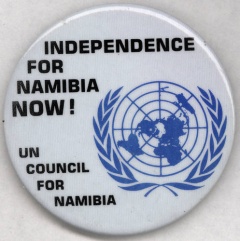 | |
| Abbreviation | UNCN |
| Formation | 1967 |
| Extinction | 1990 |
| Parent organization | UN |
The United Nations Council for Namibia (UNCN) was established in 1967 (for the first year, known as the United Nations Council for South West Africa) as the legal Administering Authority for the UN Trust Territory, Namibia, which continued to be occupied by apartheid South Africa after the UN terminated its mandate in 1966.[1]
Contents
Illegal occupation
In 1971 the International Court of Justice ruled that the continued presence of South Africa in Namibia was illegal and as a result South Africa was under the obligation to withdraw its administration from Namibia immediately and thus put an end to its occupation of the Territory. But South Africa refused to withdraw, and the national liberation movement South West Africa People's Organisation (SWAPO) proceeded with its struggle for independence.[2]
Governors-in-waiting
Although the UN Council for Namibia was prevented from establishing de facto control of the country, the UNCN did appoint a series of seven UN Commissioners to act as governors-in-waiting. The 7th UN Commissioner for Namibia, Bernt Carlsson, was scheduled to take control of Namibia upon the signing of the New York Accords by South African Foreign Minister Pik Botha on 22 December 1988. However, Carlsson was killed in the Lockerbie bombing of 21 December 1988 and Botha passed control to the South African appointee Administrator-General Louis Pienaar instead.[3]
UNCN Decree
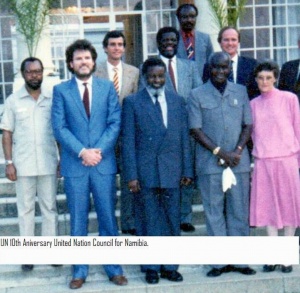
The UN Council for Namibia enacted in 1974 a Decree for the Protection of the Natural Resources of Namibia, under which no person or entity could search for, take or distribute any natural resources found in Namibia without the Council's permission. Any person or entity contravening the Decree could be held liable for damages by the future government of an independent Namibia. Also in 1974, the Council established the UN Institute for Namibia, located in Lusaka, Zambia. The Institute, which operated until after independence, provided Namibians with education and training equipping them to administer a free Namibia. In 1976 the UN Security Council for the first time demanded that South Africa accept elections for the Territory under United Nations supervision and control. In the same year, the UN General Assembly condemned South Africa for organising so-called constitutional talks at Windhoek, Namibia's capital, designed to perpetuate the colonial oppression and exploitation of Namibia. It decided that any independence talks must be between South Africa and the South West Africa People's Organisation (SWAPO), which UNGA recognised as the sole and authentic representative of the Namibian people. UNGA also launched a comprehensive assistance programme in support of Namibia's nationhood, involving assistance by United Nations organisations and specialised agencies.
In 1977, UNGA declared that South Africa's decision to annex Walvis Bay — Namibia's main port and vital economic avenue — was illegal, null and void and an act of colonial expansion. At a special session on Namibia in 1978, UNGA expressed support for the armed liberation struggle of Namibian people, and stated that any settlement must be arrived at with the agreement of SWAPO and within the framework of United Nations resolutions.[4]
Namibian Yellowcake
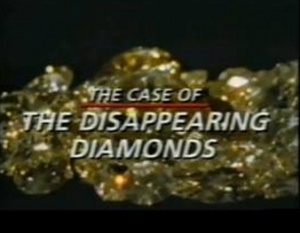
On 10 March 1980, the TV documentary "Follow the Yellowcake Road" was broadcast in the UK by Thames Television.[5] Synopsis of the film:
- "World In Action investigates the secret contract and operation arranged by British-based Rio Tinto Zinc Corp to import into Britain uranium (Yellowcake) from the Rössing Uranium Mine in Namibia, whose major shareholders are the governments of Iran and South Africa. This contract having received the blessing of the British government is now compromising the UK's position in the United Nations negotiations to remove apartheid South Africa from Namibia, which it is illegally occupying."[6]
In May 1985, the UN Council for Namibia decided to take legal action against the Dutch arm of the Anglo/Dutch/German consortium URENCO for breaching the UNCN Decree by importing uranium ore from the Rössing Uranium Mine in Namibia. The case was expected to be ready by the end of 1985 but was delayed because URENCO argued that, despite having enriched uranium of Namibian origin since 1980, it was impossible to tell where specific consignments came from. When the case finally reached court in July 1986, the Dutch government took URENCO's line, claiming not to have known where the uranium had been mined.[7]
Upon the adjournment of the URENCO proceedings, SWAPO's UN representative, Helmut Angula, insisted that other companies, such as Shell, De Beers (Consolidated Diamond Mines), Newmont, and Rio Tinto Group were also likely to face prosecution for breaching the UNCN Decree.[8]
Gem Diamonds
In a 28 September 1987 World In Action TV documentary ("The Case of the Disappearing Diamonds"), UNCN Bernt Carlsson warned that he intended to start proceedings against the countries and firms which had been defying UN law over many years by stealing billions of pounds' worth of Namibia's natural resources. Among those facing UN compensation claims were: the diamond mining firm De Beers; P W Botha's apartheid regime of South Africa; Rio Tinto Group, owners of the Rössing Uranium Mine; and, the government of Iran which today still owns 15% of Rössing and, in 1988-89, received large shipments of uranium from Namibia. When asked if he would be taking action against other companies such as De Beers, the diamond mining conglomerate, Bernt Carlsson told interviewer John Coates:
- "All the companies which are carrying out activities in Namibia which have not been authorised by the United Nations are being studied at present. As far as De Beers is concerned, the corporation has been trying to skim the cream which means they have gone for the large diamonds at the expense of the steady pace. In this way they have really shortened the lifespan of the mines. One would expect from a worldwide corporation like De Beers and Anglo American that they would behave with an element of social and political responsibility. But their behaviour in the specific case of Namibia has been one of profit maximation regardless of its social, economic, political and even legal responsibility."[9]
Because Bernt Carlsson was murdered on Pan Am Flight 103 at Lockerbie on 21 December 1988, none of those prosecutions ever took place. [10]
Namibian independence
Implementation of United Nations Security Council Resolution 435 (UNSCR 435) of 1978 finally began on 1 April 1989, and UN Special Representative Martti Ahtisaari arrived in Windhoek to head the UN Transition Assistance Group (UNTAG) to oversee the election in November 1989 that led to Namibian independence four months later.[11]
Dissolution
At the UN General Assembly on 12 September 1990 the UNCN was dissolved following the independence of Namibia on 21 March 1990. Extract of UNGA Resolution A/RES/44/243:
- "Requests the UN Secretary-General immediately to arrange, in consultation with the Government of Namibia, to co-ordinate the transfer to the Government of Namibia of the programmes, activities and assets of the United Nations Council for Namibia, including archival collections consisting of, inter alia, major resolutions and decisions of the United Nations on the question of Namibia and other relevant documents and official correspondence, as well as, in particular, those relating to the implementation of Decree No 1 for the Protection of the Natural Resources of Namibia and to the accession to international conventions and representation of Namibia in specialised agencies of the United Nations and intergovernmental organisations."[12]
Related Documents
| Title | Type | Publication date | Author(s) | Description |
|---|---|---|---|---|
| Document:Pan Am Flight 103: It was the Uranium | article | 6 January 2014 | Patrick Haseldine | Following Bernt Carlsson's untimely death in the Lockerbie bombing, the UN Council for Namibia inexplicably dropped the case against Britain's URENCO for illegally importing yellowcake from the Rössing Uranium Mine in Namibia. |
| Document:The Rossing File:The Inside Story of Britain's Secret Contract for Namibian Uranium | pamphlet | 1980 | Alun Roberts | Scandal in the 1970s and 1980s of collusion by successive British governments with the mining conglomerate Rio Tinto to import yellowcake from the Rössing Uranium Mine in Namibia (illegally occupied by apartheid South Africa) in defiance of international law, and leading to the targeting of UN Commissioner for Namibia Bernt Carlsson on Pan Am Flight 103 in December 1988. |
References
- ↑ "Independence for Namibia Now! UN Council for Namibia"
- ↑ "Membership of UNHCR represented by the United Nations Council for Namibia"
- ↑ "U.N. Officer on Flight 103"
- ↑ "Historical background - Namibia"
- ↑ "Follow The Yellowcake Road"
- ↑ World In Action "Follow The Yellowcake Road"
- ↑ "Council for Namibia sues Netherlands over Namibia's natural resources"
- ↑ "Namibian Sun spotlights Lockerbie"
- ↑ "Bernt Carlsson and the Case of the Disappearing Diamonds"
- ↑ "Murder of Bernt Carlsson must not go unpunished"
- ↑ "United Nations Council for Namibia"
- ↑ "Dissolution of the United Nations Council for Namibia"
